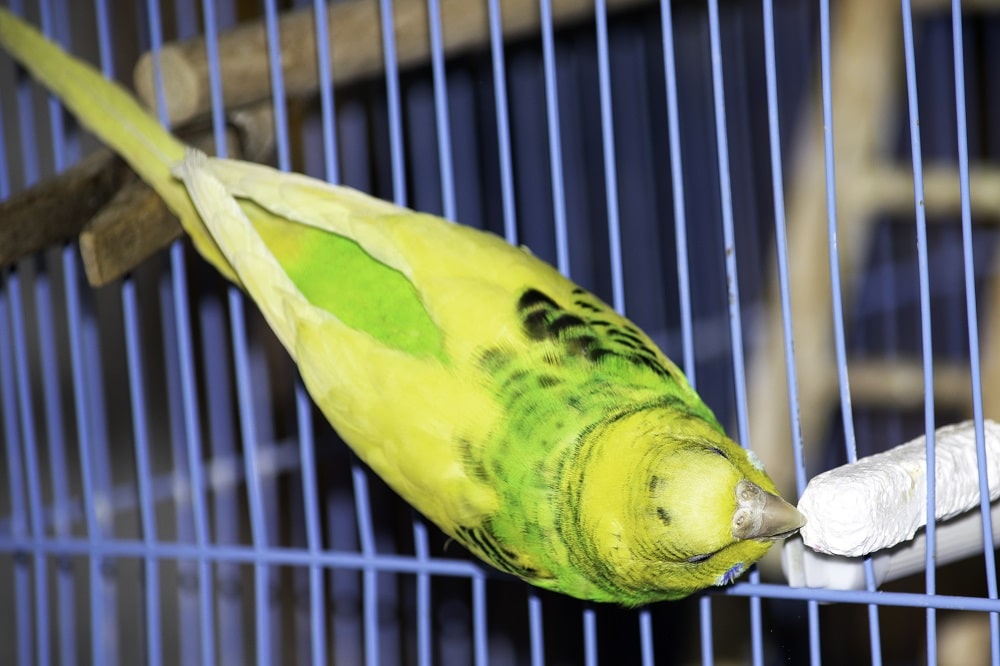Like to DIY your own pet supplies? Great! Making toys and food yourself is a fantastic way to save some money, while also giving you the peace of mind of knowing that you can control exactly what’s in them. Did you know that one thing you can easily make yourself at home is a calcium block supplement? There are a few different ways to do it, and there’s a wide range of ingredients you can use to create a block that’s high in calcium, as well as trace nutrients and vitamins.
Keep reading to find out everything you need to know to DIY calcium blocks for your calcium-needing pets!
Why does my pet need a calcium block?
We’ve known for a very long time that living organisms need all kinds of minerals to thrive. Studies dating back as far as the 1930s show that calcium in particular is crucial for the normal functioning of all animals, with some quickly running into serious health issues when their bodies lack it. Because they can’t produce it themselves, they have to get it from their environments—and specifically their diets.
Wild birds, reptiles, invertebrates and other animals get enough calcium to keep their bodies functioning well by depending on their instincts. When their internal supplies run low, a signal is sent to the brain that motivates them to seek out calcium-rich foods. Many even occasionally eat soil or clay for this reason, a very normal behavior known as “geophagy”.
Humans are not exempt from all of this, by the way! When we need calcium and other minerals, we can start feeling a strong desire to eat dairy-based foods, nuts and seeds, or red meat. If these cravings go into overdrive and make us seek out things that aren’t food (like chalk, clay, toothpaste, and even soap), we call it “pica”. Geophagy, a form of pica, is considered normal in some cultures; it’s common for pregnant women to consume soil in some parts of Africa, for example. Unfortunately, this can have negative health effects.
Calcium whenever you want
When it comes to our pets, it can be a good idea to give them the option to follow their own instincts when it comes to their calcium intake. That’s why in addition to researching their specific needs, feeding them a suitable and varied diet, and taking them for regular health check-ups, it’s a great idea to also give them unrestricted access to a calcium block. Sure, their base diets should be varied and calcium-rich, but for pets that have the ability to gnaw on solid foods, we can also offer them a calcium source they can nibble at when they feel the need (and leave alone when they don’t).
Access to enough calcium can help prevent a slew of problems, from soft shells in reptiles to abnormal feather developments in birds—and even seizures. And although you can buy cheap calcium blocks in every pet store, making them yourself is also very easy. This allows you to customize the end result and can even save money if you keep many animals! It’s also just nice to know exactly what’s in your pet’s supplements.

Does my pet need a calcium block?
If your pet has an exoskeleton or lays eggs, and is able to gnaw at something solid like a block, then the answer is usually yes.
- Reptiles: particularly turtles and tortoises, but also egg-laying lizards (for frogs, a powdered supplement is preferred)
- Birds: all of them, but especially African gray parrots, which are prone to calcium deficiencies
- Invertebrates: yes for most crustaceans like (hermit) crabs and snails, no for arthropods like insects and spiders (their exoskeletons are made of chitin, not calcium carbonate)
Furry pets like rodents, cats, and dogs usually don’t need calcium supplements like blocks. The exception would be if they’re severely deficient from a bad diet, or maybe if they suffer from certain metabolic disorders; that’s something you should discuss with your vet if it’s relevant.
Tip: If you keep females of any species that lays eggs, calcium becomes extra important during the breeding season, as egg production really depletes an animal’s reserves. Fun fact: zebra finches use 20%(!!!) of their calcium stores for a single egg. According to research, a lot of that doesn’t actually come from dietary calcium but from their own bones. This can cause brittle bones if the resulting deficiency is not corrected. Birds are hardcore!
DIY calcium block recipe
Ingredients
There are loads of different things that can go into a calcium block. We like to keep it on the simple side when making ours, though! The following work well together and create a calcium-packed end result:
-
Eggshells, ground to a fine powder in a blender
-
Cuttlebone, ground to a fine powder in a blender (sold at pet stores)
-
Oyster shells, ground to a fine powder in a blender (sold at pet stores)
-
Plaster of Paris*
-
Water
*It might sound odd to offer this to an animal, but it’s actually safe and non-toxic when used correctly. It provides a solid structure and allows you to shape your calcium block using a mold.
Method
You can use equal amounts of eggshell, cuttlebone, and oyster shell for your homemade calcium blocks. Add double the weight in plaster of Paris and half the weight in water. For example:
-
1/2 cup each of powdered eggshell, cuttlebone, and oyster shell
-
Add 1 1/2 cups of plaster of Paris
-
Mix in 3/4 cup of water
Once you’ve mixed your ingredients, they can be poured to shape them You can use any kind of mold you prefer: muffin cups, ice cube molds, or anything used for baking. Chocolate molds in fun shapes are our favorite way to do it! Just pour the wet mixture into the molds, then fold a piece of wire in half and stick it in there. This way, you can later attach the hardened block to your pet’s cage, terrarium, or enclosure.
Once poured and prepped, just leave your calcium blocks alone for a day or so to harden. After that, remove them from the molds and offer them to your pet. They may not show interest immediately—but they’ll instinctively go for it when they need calcium.
Tip: Add some color!
Here’s a fun extra tip: Does your pet respond well to color or scent? Health food stores often carry powders that are pet-safe and can enrich and color your homemade calcium blocks. Some of the spices you already have in your kitchen might work too—they contain all sorts of micronutrients and make a great natural alternative to food dyes. Since they’re dry powders, dehydrated or freeze-dried powders and spices won’t make your calcium blocks spoil faster.
Try the following:
Green: Wheatgrass, spirulina, moringa, matcha
Purple: Beet, açai
Yellow: Turmeric, saffron
Orange: Paprika, freeze-dried carrot
Still not funky enough? You can also mix in bird- or reptile-safe dried extras like rose petals or hibiscus—tea shops usually carry these.
Conclusion
Most living beings rely on calcium for their health, so it’s important to make sure your small pet gets enough of it. Luckily, its natural instincts ensure it’ll seek out this mineral when it needs it. Just place a DIY calcium block in its cage or enclosure and it’ll nibble at it when its body runs low!
Sources & further reading







